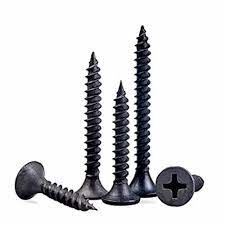Hex Flange Head Self-Drilling Screws for Robust Fastening Solutions
Understanding Hex Flange Head Self-Tapping Screws A Comprehensive Guide
In the world of fasteners, the choice of screws is paramount for ensuring structural integrity and longevity in various applications. Among the myriad of options available, hex flange head self-tapping screws stand out for their unique design and functionality. This article delves into the specifics of hex flange head self-tapping screws, including their characteristics, advantages, applications, and installation techniques.
What is a Hex Flange Head Self-Tapping Screw?
A hex flange head self-tapping screw is a type of fastener that combines a hexagonal head with a flange and a self-tapping mechanism. The hex head allows for easy installation using a wrench or socket, providing a secure grip during tightening. The flange serves to distribute the load evenly over a larger area, reducing the risk of damage to the material being fastened.
The self-tapping feature allows these screws to create their own threads in the material they are driven into, making them particularly useful in thin materials or applications where pre-drilling is impractical or impossible. This dual functionality makes hex flange head self-tapping screws an essential component in various industrial and construction applications.
Key Characteristics
Hex flange head self-tapping screws come with several key characteristics
1. Material Composition They are typically made from durable materials such as stainless steel, carbon steel, or non-corrosive alloys. The choice of material often depends on the application and environmental conditions.
2. Thread Design The threads of self-tapping screws can be coarse or fine, with designs varying based on the specific requirements of the material they are intended for. The self-tapping threads cut into the material, ensuring a tight fit.
3. Head Design The hex head provides an excellent grip for tools, making installation straightforward. The flange not only reinforces the connection but also assists in preventing pull-through.
4. Coatings and Finishes Many manufacturers offer various coatings, such as zinc plating or black oxide, to enhance corrosion resistance, which is particularly important in outdoor or humid environments.
Advantages of Using Hex Flange Head Self-Tapping Screws
2. Strength and Stability The flange design increases the bearing surface area, providing enhanced load distribution. This reduces the chances of stripping and improves the screw's holding power over time.
hex flange head self tapping screw

3. Versatility Suitable for a wide range of materials including wood, metal, and plastic, hex flange head self-tapping screws are adaptable to various applications, from automotive assemblies to construction projects.
4. Reduced Labor Costs Since they simplify the installation process, they can lead to reduced labor costs and shorter project completion times.
Common Applications
Hex flange head self-tapping screws are utilized across various industries, including
- Automotive In vehicle assembly, where secure fastening is critical for safety and performance. - Industrial Equipment In machinery and panels, where robustness and durability are necessary. - Construction For fastening metal sheeting, structural connections, and other building materials. - Electronics In assembling enclosures and components where precise alignment is important.
Installation Techniques
To ensure optimal performance of hex flange head self-tapping screws, proper installation techniques should be followed
1. Choosing the Right Screw Select a screw with an appropriate thread design and material for the specific application.
2. Using the Correct Tool Employ a socket or wrench to tighten the screw evenly, avoiding over-tightening which can damage the flange or the workpiece.
3. Proper Positioning Ensure the screw is aligned correctly before driving it into the material to avoid cross-threading.
4. Surface Preparation Although self-tapping screws do not require pre-drilling, ensuring the surface is free of debris can enhance penetration and grip.
Conclusion
Hex flange head self-tapping screws represent a blend of innovation and practicality, making them a go-to choice for many applications. Their ease of use, strength, and versatility highlight their importance in both industrial and construction settings. By understanding their features and proper installation methods, users can maximize their effectiveness and ensure long-lasting results in their projects.
-
Top Choices for Plasterboard FixingNewsDec.26,2024
-
The Versatility of Specialty WashersNewsDec.26,2024
-
Secure Your ProjectsNewsDec.26,2024
-
Essential Screws for Chipboard Flooring ProjectsNewsDec.26,2024
-
Choosing the Right Drywall ScrewsNewsDec.26,2024
-
Black Phosphate Screws for Superior PerformanceNewsDec.26,2024
-
The Versatile Choice of Nylon Flat Washers for Your NeedsNewsDec.18,2024










